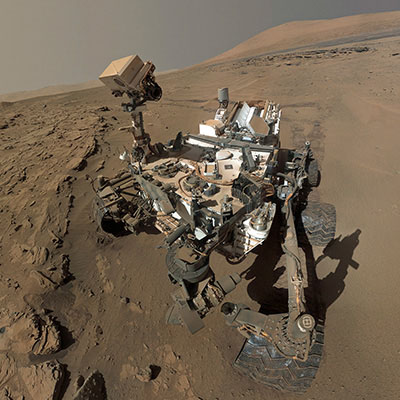Planetary Science News
NASA will soon find out if the Perseverance rover can really persevere on Mars
12-19-2025
Ars Technica — When the Perseverance rover arrived on Mars nearly five years ago, NASA officials thought the next American lander to take aim on the red planet would be taking shape by now. EAPS's Briony Horgan was quoted in the article.
Inside NASA's Prep for the Moon, Mars, and the Search for Life
12-11-2025
NASA on YouTube — NASA experts take you behind the scenes in Iceland, where they study icy volcanoes, lava fields, hydrothermal vents, and other extreme environments that mimic other worlds. EAPS Assistant Professor Ali Bramson and her research team are working to figure out how astronauts can find and characterize water/ice and what is needed to prepare them for these activities.
The evolutionary history of kissing, moss in space, and the origins of the moon
12-11-2025
NPR Short Wave Podcast— Now, a new paper in the journal Science is attempting to figure out what this object Theia was made out of and where in the solar system it came from. EAPS's Kelsey Prissel made an appearance on the podcast.
NASA’s Perseverance Rover Found Evidence of Tropical Storms on Mars
12-10-2025
Vice — In a new study published in Communications Earth and Environment, led by Adrian Broz of Purdue University EAPS, researchers report that these aluminum-rich rocks scattered around Jezero Crater have the same chemical signature as kaolinite formed in Earth’s tropical climates after millions of years of water slowly stripping minerals from rock.
Mars May Have Lightning, Scientists Find
10-10-2025
Scientific American — For years scientists have suspected that there is electrical activity on Mars. A study now confirms it: particles in the dusty Martian atmosphere rub against one another, building up electrical charge that discharges in the form of tiny lightning arcs. Aside from Earth, lightning and electrical activity were only known to occur on Saturn and Jupiter. EAPS's Roger Wiens was quoted in the article.
Findings suggest red planet was warmer, wetter billions of years ago
12-10-2025
Rocks that stood out as light-colored dots on the reddish-orange surface of Mars now are the latest evidence that areas of the small planet may have once supported wet oases with humid climates and heavy rainfall comparable to tropical climates on Earth.
Scientists say Bennu samples hold a trove of life-building ingredients
12-10-2025
MSN — Work led by planetary scientists at Purdue University describes Bennu as a carbonaceous asteroid whose composition fits with scenarios in which such bodies helped in seeding the early Earth with both water and carbon. In that picture, brine-filled pores and fractures on the parent body would have acted as miniature chemical reactors, cycling organics through different temperatures and concentrations.
Mars Sample That May Contain Evidence of Life Might Never Come Home
11-19-2025
Scientific American — Right now one of the most advanced planetary explorers ever built is scouring the surface of Mars. Supported by a team of hundreds of scientists back on Earth, the Perseverance rover has traveled nearly the distance of a marathon to answer some of the biggest questions about our neighboring world. EAPS's Briony Horgan was quoted in the article.
More News








